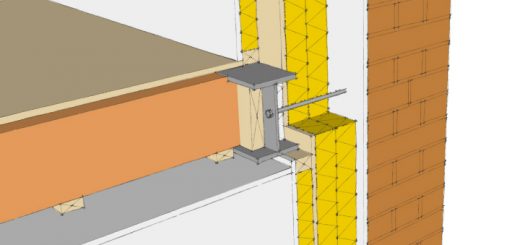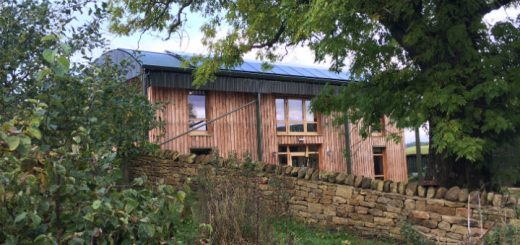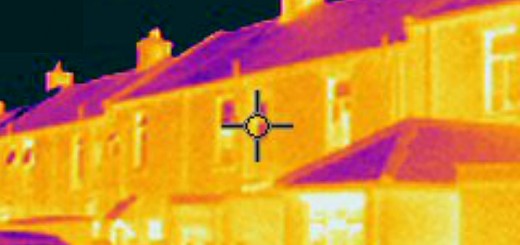How Warm is Your House?
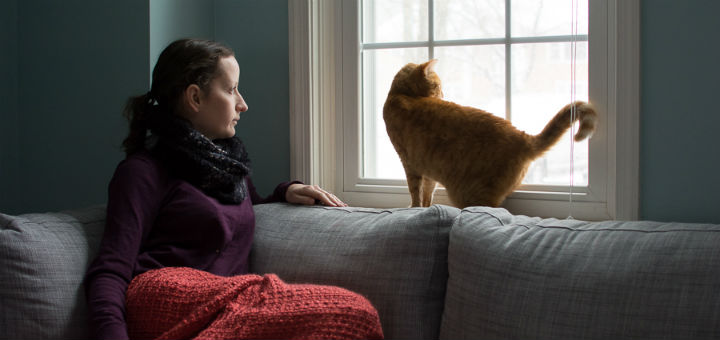
Do Southerners really heat their homes three times longer than Northerners? In this post we investigate thermal comfort and why good design and construction can reduce energy bills.
“Southerners heat their homes three times longer than Northerners,” pronounced an article that caught my attention recently (1), reinforcing both my beliefs that we’re a hardier breed up here and that the North-South divide is alive and well. Whilst the poll didn’t offer any particularly useful details, it did highlight just how much we spend on heating our homes, something that was brought into sharp relief in our recent post on Cold Homes Week.
So why do some people heat their homes more than others? It won’t surprise you to hear that average house temperatures have risen steadily over the last half century from 13.7ºC in the 1970 to 17.7ºC today (2), and it’s predicted to level out at 21ºC for living rooms, and a couple of degrees lower in bedrooms and hallways (3). We can attribute the rise to improved home insulation levels and the roll out of gas central heating, but the 21ºC plateau is no surprise. It’s considered by many to be the benchmark for thermal comfort.
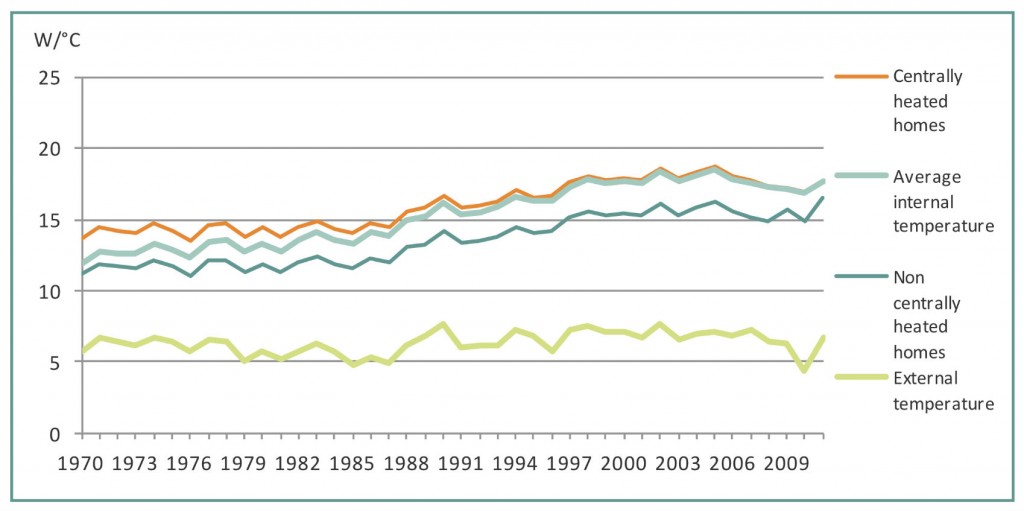
Graph of average winter internal and external temperatures (2)
The groundwork on thermal comfort was carried out in the 1970’s by Danish scientist Povl Ole Fanger. Fanger created equations based on a statistical analysis of a subject’s perception of comfort across a range of environments. He concluded that our sense of physical well-being is influenced by air temperature; how active we are; what we’re wearing; humidity; air movement; and the mean radiant temperature. The latter relates to the temperature of surfaces around us. Think of sitting beside a large single glazed window on a cold day. The internal air temperature may be warm, but you’ll probably feel cold as your body detects the cold surface of the glass. Our bodies are remarkably sensitive to changes in our thermal environment.
All of this is relevant because it affects how much energy we use for space heating. The Energy Savings Trust, for instance, suggest that turning your thermostat down just one degree can save you £85-£90 a year (4) although this won’t help thermal comfort unless you make adjustments elsewhere, such as fitting draught excluders to reduce air movement. Putting on that extra jumper is another solution, and some are taking it to new extremes. Researchers at Stanford University have figured out a way to apply a silver nanowire coating to fabrics to make them super insulating, cutting down or even cutting out the need for indoor heating when worn (5). But, having spent a night in an fleece-lined onesie in Sweden’s Ice Hotel, I can assure you it’s not a solution that will catch on anytime soon.
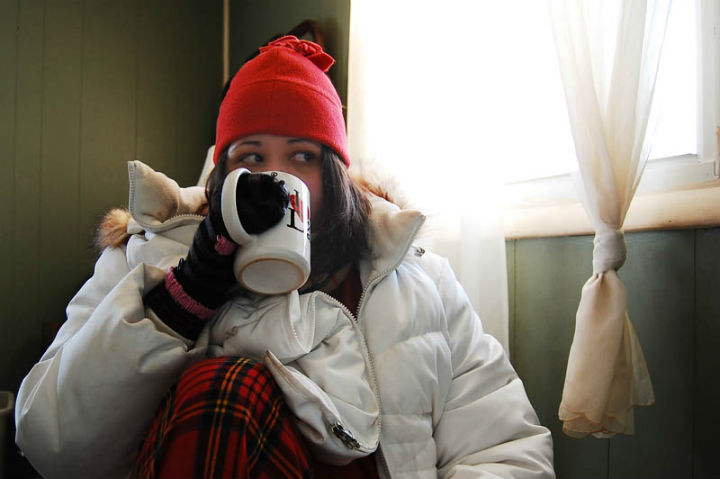
Such energy saving advice applies to most of the existing housing stock, but today’s best eco-homes are so well insulated that there’s just no need to turn up the thermostat to compensate for draughts, or cold surfaces in the room. The Passivhaus methodology, in particular, is built around achieving thermal comfort. Triple glazing is standard, and thermal bridges are designed out to avoid those cold spots. If we were building all homes to the standards that we’re capable of, then thermal comfort would be a fact of life for new home-buyers, and we can retrofit existing homes to similar standards. Sadly, there isn’t sufficient political will to make such standards the norm. The 2016 Zero Carbon Homes deadline is almost upon us, but it has been watered down so much that most of our homes will continue to struggle with thermal comfort.
Returning to that North-South divide, if Southerners want to heat their homes more than us Northerners, then I suggest they make use of some of the hot-air coming from Westminster!
References
(1) http://www.nextenergynews.co.uk/news/energy-saving/southerners-heat-their-homes-three-times-longer-than-northerners-poll-finds
(2) United Kingdom Housing Energy Fact File, DECC, 2013
(3) Domestic Energy Factfile 2008, Utley & Shorrock, BRE Press, 2008
(4) http://www.energysavingtrust.org.uk/domestic/content/energy-saving-quick-wins
(5) http://www.treehugger.com/clean-technology/super-insulated-clothing-could-cut-down-indoor-heating.html
Image credits: Feature image by Nicole Sanchez. Girl with mug image by Jamelah



